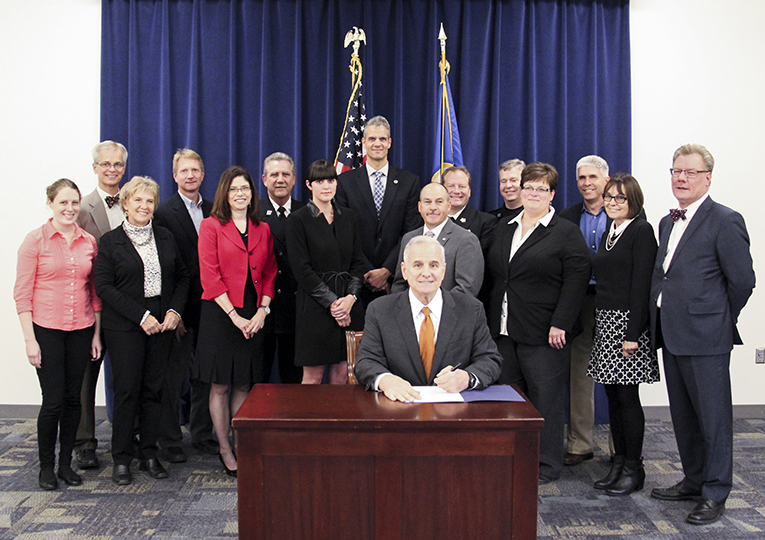In May of 2015, the Minnesota Legislature quietly passed the nation’s most comprehensive flame retardant product ban to date. The Firefighter and Children Health Protection Act of 2015 bans four toxic flame retardants in upholstered furniture and children’s products effective July 2018. Sure, 2018 may seem far off, but the extended implementation date will allow manufacturers plenty of time to get these chemicals out of their products. The Minnesota Professional Fire Fighters, the Healthy Legacy coalition, and legislative leaders worked hard to get these four flame retardants out of products that expose families to unnecessary and ineffective toxic chemicals in their own homes and expose firefighters to carcinogenic byproducts when they enter burning buildings with these products in them.
Minnesota’s law will not only protect the health of Minnesota families and firefighters, but it will help move the marketplace to phase out these problem chemicals across the country. It is clear that state chemical laws drive the safety of products nationwide and market-wide. However, a current Senate proposal to reform regulation of chemicals at the federal level puts future state laws like this at risk.
Flaws in the Senate bill
The U.S. Senate is about to take up S. 697, Senators Udall and Vitter’s bill to reform the long outdated and ineffective Toxic Substances Control Act (TSCA). There seems to be unanimous agreement that a TSCA update is long overdue and states across the country welcome the opportunity to fix its many flaws. The Senate bill fixes many of the flaws in current TSCA, including strengthening EPA’s chemical testing authority, removing the “least burdensome” criterion for restricting chemicals, and requiring industry fees to pay for some of the program costs, among other things. No bill is perfect, but S. 697 has a few key flaws, one of which is fatal for states and for public health. It significantly curtails the ability of states to restrict chemicals and creates a regulatory gap during which no action can be taken to protect the public’s health.
As written, S. 697 would preempt Minnesota and other states from taking action on a chemical when EPA begins reviewing a chemical, a review that could take 3 to 4* years, creating a regulatory void during which no state would be permitted to take action on the chemical under review. On the other hand, H.R. 2576, which passed nearly unanimously in the House, does not preempt state action until EPA makes a final determination on a chemical. The more reasonable House position on preemption supports public health protections and is therefore, in my opinion, better public policy.
Since both bills require that EPA review a paltry number of chemicals each year — 5 in the Senate bill and 10 in the House bill — we must preserve state authority to take action on chemicals of concern when EPA has not yet taken action. It will take the work of both the state and federal governments to tackle the thousands of chemicals of concern. State action on chemicals can and should continue to complement federal action. As a future conference committee considers both bills, I urge Congress to adopt the House position on preemption.
Families and firefighters in Minnesota and across the country are counting on us to protect their health. Let’s not let them down.
*The length of the preemption void has been corrected from an earlier post.




